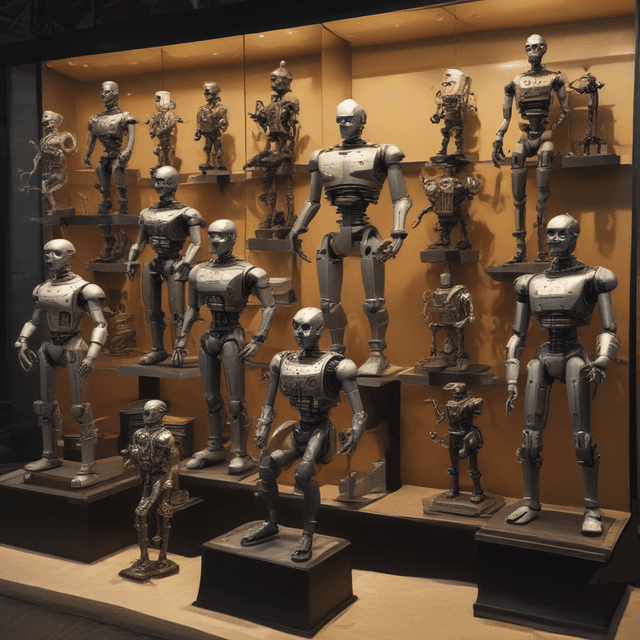
| Origins | 1600s and 1700s |
| Limitations | Limited capabilities • Religious and philosophical resistance |
| Advancements | Late 19th and 20th centuries • Sensors • Control systems • Artificial intelligence |
| Current State | Rapidly evolving, Sophisticated humanoid and animal-like robots, Wide range of uses |
| Early Pioneers | Mechanical engineering • Clockwork |
| Early Developments | Mechanical automata, 'artificial servants' |
Robotics is the field of study and application of machines designed to perform tasks that would otherwise be carried out by humans. The history of robotics can be traced back to the 17th and 18th centuries, when early pioneers in mechanical engineering and clockwork began creating increasingly lifelike mechanical automata and "artificial servants." While rudimentary by modern standards, these early robots were marvels of craftsmanship and innovation that laid the groundwork for the field.
The concept of artificial humanlike machines has existed for centuries, with early examples found in ancient China, Ancient Greece, and the Islamic Golden Age. However, the first significant breakthroughs in practical robotics occurred in Europe during the Renaissance and Enlightenment eras.
In the 1600s, René Descartes and other philosophers speculated about the possibility of creating human-like "automata" powered by clockwork mechanisms. This inspired inventors like Jacques de Vaucanson to build astonishingly lifelike mechanical ducks, flute players, and other humanoid and animal-like robots in the 1700s. These early automata could perform complex motions, play music, and even appear to be conscious.
Similar automata were constructed by Wolfgang von Kempelen, Pierre Jaquet-Droz, and others throughout the 18th century. While these machines were marvels of mechanical ingenuity, they were still very rudimentary, capable of only pre-programmed, repetitive actions. Nonetheless, they captivated audiences and sparked philosophical debates about the nature of life and intelligence.
The 19th century saw a major leap forward in robotics, with the creation of increasingly sophisticated humanoid robots. Charles Babbage, considered the "father of the computer," proposed designs for a mechanical calculating engine that could be programmed to carry out complex sequences of operations. His student Ada Lovelace expanded on this work, envisioning that such a machine could be used to create "artificial beings."
Building on these principles, inventors like Jean-Eugène Robert-Houdin, Henri Maillardet, and Alfred Volk constructed highly advanced humanoid automata in the 1800s. These robots could perform astonishingly lifelike motions, facial expressions, and even rudimentary conversations. Some, like Volk's "Mechanical Man," even had the capacity for simple reasoning and decision-making.
However, the creation of these "artificial humans" sparked intense philosophical and religious controversy. Many viewed them as blasphemous attempts to usurp the power of the divine. This slowed the pace of further innovation in humanoid robotics for much of the 19th century.
It was not until the late 19th and early 20th centuries that robotics began to find significant real-world applications, particularly in the realm of industrial automation. Innovations in electric motors, control systems, and sensors enabled the creation of more practical, specialized robots for tasks like materials handling, assembly, and welding in factories.
The first industrial robots, such as the Unimate, were installed in General Motors factories in the 1960s. This ushered in the widespread adoption of robotics across manufacturing and other sectors. New breakthroughs in computer science, artificial intelligence, and nanotechnology in the late 20th century further expanded the capabilities and applications of robots.
Today, robotics is a rapidly evolving field with applications ranging from domestic service robots, to medical robots assisting in surgery, to military robots used in combat. Humanoid and animal-inspired robots in particular continue to capture the public imagination, though ethical debates about the implications of artificial life remain.
As robotics and AI grow ever more sophisticated, their impact on the workforce, society, and the very definition of "humanity" continues to be a major area of research, discussion, and even science fiction speculation. The innovations and controversies surrounding robotics are sure to continue shaping the future in profound ways.